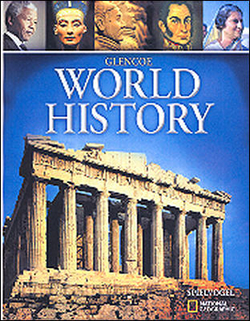Glencoe World History © 2010Chapter 13:
The Age of ExplorationChapter OverviewsThe explorations of the fifteenth and sixteenth centuries led to expanded European power and a sharp increase in trade. Colonization, a dramatic growth in the slave trade, and the spread of Christianity were among the consequences of European expansion. Section 1 Exploration and Expansion
Beginning in the fifteenth century, Europeans set out on a series of overseas voyages that would lead to the establishment of European trading posts and colonies in both the Americas and the East. Religious zeal, a quest for personal and national glory, and a desire for new wealth were the chief motives behind the European voyages. New technologies and the growing power of the European monarchies made the voyages possible. The Spanish and Portuguese conquests of Central and South America were rapid and devastated the Aztec and Inca civilizations. Wanting to share in the wealth, the Dutch, English, and French moved to set up colonies in North America. Section 2 The Atlantic Slave Trade
European expansion increased international trade and a new economic theory, mercantilism, was born. Slavery, which had been practiced in Africa since ancient times, saw a dramatic rise in the sixteenth century. Many of the enslaved Africans were sent to Brazil and the Caribbean to work on sugarcane plantations. The voyage across the Atlantic Ocean, the middle portion of the triangular trade route, became known as the Middle Passage. Some ten million Africans were shipped on the Middle Passage, and many of them died en route or died from disease in the Americas. As the demand for enslaved people grew, slave traders in Africa moved farther inland to find their victims. In addition to the tragic effects on individuals, the slave trade completely devastated some African states, such as Benin. Section 3 Colonial Latin America
Spain established an enormous colonial empire in Central America, most of South America, and parts of North America. Portugal colonized Brazil. Colonial Latin America was divided into social classes, with peninsulares at the top, followed by creoles, mestizos, and mulattoes. Latin America provided vast wealth for Spain and Portugal. Gold and silver were sent to Europe. Landowners created immense plantations farmed by Native Americans and enslaved Africans. Spain's king appointed viceroys to rule his Latin American empire. Catholic missionaries—Dominicans, Franciscans, and Jesuits—set up missions as well as cathedrals, hospitals, and schools throughout the Spanish Empire.  | 
















